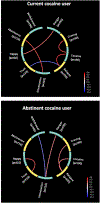SPEECH MARKERS FOR CLINICAL ASSESSMENT OF COCAINE USERS
- PMID: 32095118
- PMCID: PMC7039659
- DOI: 10.1109/icassp.2019.8682691
SPEECH MARKERS FOR CLINICAL ASSESSMENT OF COCAINE USERS
Abstract
One of the main foci of addiction research is the delineation of markers that track the propensity of relapse. Speech analysis can provide an unbiased assessment that can be deployed outside the lab, enabling objective measurements and relapse susceptibility tracking. This work is the first attempt to study unscripted speech markers in cocaine users. We analyzed 23 subjects performing two tasks: describing the positive consequences (PC) of abstinence and the negative consequences (NC) of using cocaine. We perform two main experiments: first, we analyzed whether acoustic and semantic features can infer clinical variables such as the Cocaine Selective Severity Assessment; then, we analyzed the main problem of interest: to see if these features are powerful enough to infer if the subjects remains abstinent. Our results show that speech features have potential to be used as a proxy to monitor cocaine users under treatment to recover from their addiction.
Keywords: abstinence; acoustic; cocaine; drug addiction; semantic.
Figures
References
-
- Moreira T, Gandez C, Figueiro LR, Capobianco DM, Cunha K, Ferigolo M, Barros HMT, Cassol M, “Substance use, voice changes and quality of life in licit and illicit drug users,” Revista CEFAC, vol. 17, no. 2, pp. 374–384, 2015.
-
- Filho ACN, Bettega SG, Lunedo S, Maestri JE, Gortz F, “Repercussöes otorrinolaringologicas do abuso de cocaina e/ou crack em dependentes de drogas,” Rev. Assoc. Med. Bras Vol 45, no. 3, pp. 237–241, 1999. - PubMed
-
- Bradlow AR, “A cross-language comparison of vowel production and perception: language- specific and universal aspects*,” Working Papers of the Cornell Phonetics Laboratory, vol. 8, pp. 29–85, 1993.
Grants and funding
LinkOut - more resources
Full Text Sources
Miscellaneous


